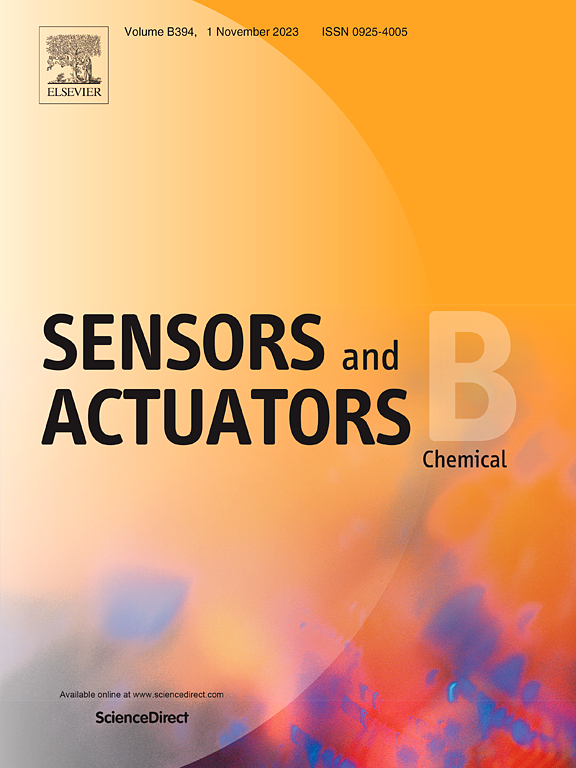一种新的基于毒蕈碱受体的细胞生物分析方法,用于高毒性有机磷化合物的灵敏检测和分化
IF 8
1区 化学
Q1 CHEMISTRY, ANALYTICAL
引用次数: 0
摘要
高毒性有机磷化合物(OPs),包括农药和神经毒剂,对粮食安全和公众健康构成重大威胁。新型神经毒剂Novichoks的出现,加上人工智能(AI)驱动的潜在未知毒性OPs的快速产生,为检测和识别带来了前所未有的挑战。传统方法在筛选和识别这些新兴或未知OPs方面存在局限性,因此迫切需要敏感、高通量和非靶向筛选策略。在这里,我们开发了一种新的基于毒蕈碱受体的细胞生物分析方法,使用重组U2OS细胞表达M3受体和增强型绿色荧光蛋白(EGFP)标记的活化t细胞核因子c1 (NFATc1)。正常情况下,乙酰胆碱酯酶(AChE)水解乙酰胆碱(ACh),从而阻止乙酰胆碱诱导的U2OS细胞EGFP-NFATc1核易位。然而,当暴露于OPs时,乙酰胆碱酯酶活性被抑制,导致乙酰胆碱酯酶的积累,激活M3受体,引发明显的EGFP-NFATc1核易位。该方法的检出限低:诺维乔克A230、A232和有毒剂X (VX)的检出限为30 pM;soman (GD)和A234为0.1 nM;塔奔(GA)和沙林(GB) 0.3 nM;对氧磷为1nm。它还提供了ops暴露后的多参数细胞学信息,使各种AChE抑制剂的分化和探索新的毒理学途径成为可能。此外,该方法已成功地应用于检测高毒性OPs,如VX和对氧磷,在加标食品基质。该方法为具有AChE抑制活性的已知和未知毒性物质的敏感、高通量筛选和鉴定提供了可靠、高效的工具。本文章由计算机程序翻译,如有差异,请以英文原文为准。
A novel muscarinic receptor-based cellular bioanalytical method for sensitive detection and differentiation of highly toxic organophosphorus compounds
Highly toxic organophosphorus compounds (OPs), including pesticides and nerve agents, pose a significant threat to food security and public health. The emergence of novel nerve agents, Novichoks, coupled with artificial intelligence (AI)-driven rapid creation of potentially unknown toxic OPs, has created unprecedented challenges for detection and identification. Traditional methods have limitations for screening and identifying these emerging or unknown OPs, highlighting the urgent need for sensitive, high-throughput, and non-targeted screening strategies. Here, we developed a novel muscarinic receptor-based cellular bioanalytical method using recombinant U2OS cells expressing the M3 receptor and the enhanced green fluorescent protein (EGFP)-labeled nuclear factor of activated T-cells c1 (NFATc1). Normally, acetylcholinesterase (AChE) hydrolyzes acetylcholine (ACh), thus preventing ACh-induced EGFP-NFATc1 nuclear translocation in U2OS cells. However, when exposed to OPs, AChE activity is inhibited, leading to an accumulation of ACh that activates the M3 receptor and triggers a noticeable EGFP-NFATc1 nuclear translocation. This method achieves low detection limits: 30 pM for Novichok A230, A232, and venomous agent X (VX); 0.1 nM for soman (GD) and A234; 0.3 nM for tabun (GA) and sarin (GB); 1 nM for paraoxon. It also offers multi-parameter cytological information post-OPs exposure, enabling the differentiation of various AChE inhibitors and exploration of novel toxicological pathways. Moreover, this method has been successfully applied to detect highly toxic OPs, such as VX and paraoxon, in spiked food matrices. This new method offers a reliable and efficient tool for the sensitive, high-throughput screening and identification of both known and unknown toxic substances with AChE inhibitory activity.
求助全文
通过发布文献求助,成功后即可免费获取论文全文。
去求助
来源期刊

Sensors and Actuators B: Chemical
工程技术-电化学
CiteScore
14.60
自引率
11.90%
发文量
1776
审稿时长
3.2 months
期刊介绍:
Sensors & Actuators, B: Chemical is an international journal focused on the research and development of chemical transducers. It covers chemical sensors and biosensors, chemical actuators, and analytical microsystems. The journal is interdisciplinary, aiming to publish original works showcasing substantial advancements beyond the current state of the art in these fields, with practical applicability to solving meaningful analytical problems. Review articles are accepted by invitation from an Editor of the journal.
 求助内容:
求助内容: 应助结果提醒方式:
应助结果提醒方式:


